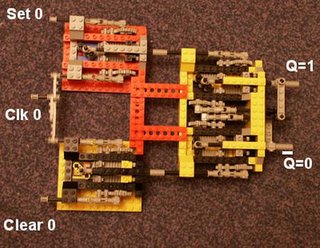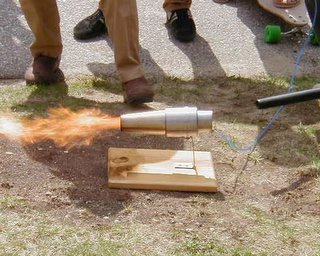i hope i don't offend anyone with this
So i'm eavesdropping on this conversation to my right. A circle of people who talk about nothing like it's a big idea and who continuously pat themselves on the back for even talking about these things. Generalities without meanings. And i'm finding that the more i hear, the more i hate everything they're saying. It's one woman in particular. She's discussing with some school representatives about them having prom and homecoming dances. More specifically, she's disagreeing with them about letting the kids have these dances (the school didn't originally have them). Granted... as much as i hated school dances, i think that if the kids want them and if they are willing to go through the process of organizing things, then they should be allowed to have it. The woman from the school claims (and i agree... with my own thoughts that will be added later) that the process of organizing and figuring out things can be a learning experience. The woman in the crowd (if a crowd is three people) countered that this process of figuring out and organizing the dance takes away from the kids' valuable time when they could be learning other things and that the learning experience involved in such an activity would be all of five minutes. I figured since their words illicited such a strong reaction from myself that i should examine why it is that i feel strongly and exactly what it is that i'm respoding to.
First off, the way that the woman in the crowd talked rubbed me the wrong way. She was saying things like they were 100% the truth because she's a teacher and she knows what these kids need blah blah blah blah. Stereotypical in some sense. I felt that she was speaking with false authority and with false pretenses. Someone regurgitating what they've always done because that's just the way it is... someone i don't feel has put enough of the right thought into what she was saying. To use Seymour's words, someone making excuses for the QWERTY keyboard even when the real reasons have long since gone. I find that when anyone speaks like that, i immidiately take offense. What gives her the right to dictate from high what the kids do or don't want or need? I hate this tone of voice mainly because it implies that there is a clear right or wrong and that one person alone can know “what's best” and that it's their duty to make sure everyone else is convinced that their way is right.
I truly and honestly believe that, just like the design process, there is not only one solution. Different solutions work better in different situations. It's not our job to duplicate... to replicate... to unthinkingly create something mechanical... to push kids through one mold. It's our job to figure out how each individual thinks, how they learn... to figure out what they're good at and what they care about and to help them incorporate useful skills into what they already know. To aid in their own personal appropriation of knowledge.
Building on this, why can't the organization of a school dance be something just as learning rich... possibly even more rich... as what's considered a more traditional route? If it's claimed otherwise, then the claimant (claimee?) is not thinking... not dreaming... not pushing. everything is a learning experience. Just think of what a school dance could be if people dreamed more about them instead of simply trying to recreate last year's dance with a new theme. There's no reason why technology couldn't be integrated. Movement. Robotics. Sensors. Documentation. Story telling via blog/DV... etc. And with a simple desire for a dance, a more meaningful experience could be created. But most importantly, it was something the kids themselves created from their own desires. The results of that experience cannot be measured. Confidence. Creativity. Self-esteem. Things that are immeasurable and that lead to more in-depth and more meaningful learning.
I guess I just can't see why people think that they have any right to say that one way is best, that there's only one mold, that there's only one path to take. Why is what you do more meaningful than what i do or what someone else does? It's not.
I got into an argument with one of my friends the other day about originality. They were arguing that if people take the viewpoint that no act is original, then there's no purpose to live for. (they were arguing that everything was original.) My argument is that no act is original (at least not when you break it down into the simplest concept of what that action is), it's just that every human is a sum of so many experiences and choices, that the order in which they happen (if they happen) and the way that they happen is original for every single human. Our gestures may not be unique, but our whole selves are. It's not right to try to force an experience on someone because they might not be in the right place for that. Maybe their path in life has been so vastly different from your own that you cannot make sense to them. But nothing gives you the right to say that your own personal path is the only right way to go, simply because you think so highly of yourself that you think you turned out whole, complete, and ok. Life is a process that all ends in the same goal, and every process is different. Every process should be allowed to be different.
(david says i can't change everyone)


